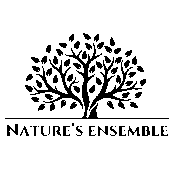The Power of Urban Green Roofs: Transforming Cities for a Sustainable Future
As cities continue to expand, the challenges of urban heat, pollution, and limited green spaces threaten the quality of life and the health of ecosystems. Urban green roofs offer a compelling, nature-based solution that reimagines rooftops as vibrant ecosystems contributing to sustainable, regenerative urban environments. From reducing the urban heat island effect to managing stormwater and enhancing biodiversity, the benefits of green roofs are powerful and multifaceted.
What Are Urban Green Roofs?
Urban green roofs are layers of vegetation planted over waterproofing membranes on building rooftops. These living roofs can vary from simple grass covers to complex ecosystems supporting diverse plants and wildlife. By harnessing natural processes like evapotranspiration and providing insulation, green roofs contribute to healthier, cooler, and more resilient cities.
Critical Environmental Benefits of Urban Green Roofs
1. Mitigating the Urban Heat Island Effect
Cities are often hotter than surrounding rural areas due to heat-absorbing materials such as concrete and asphalt. Green roofs mitigate this effect by shading surfaces and releasing moisture through evapotranspiration, cooling the air. The US EPA notes that green roofs can reduce city temperatures by up to 5°F and rooftop surface temperatures by an average of 30°C during summer, significantly lowering urban heat.
2. Improving Air Quality and Reducing Pollution
Plants on green roofs filter airborne pollutants, including carbon dioxide, nitrogen oxides, sulfur dioxide, and particulate matter. Studies demonstrate reductions in air pollution by 30–57%, helping combat smog and related health issues. Furthermore, reduced energy use from cooler buildings lowers greenhouse gas emissions.
3. Managing Stormwater and Enhancing Water Quality
Green roofs absorb and retain a substantial amount of rainfall—up to 70–90% in summer—reducing runoff that can overwhelm urban drainage and cause flooding. They also filter pollutants from rainwater, improving its quality before it enters water systems. This natural stormwater management contributes to groundwater recharge and alleviates urban water stress.
4. Energy Conservation and Building Insulation
By providing natural insulation, green roofs reduce heating and cooling energy demands in buildings. This lowers electricity consumption by approximately 0.7% compared to conventional roofs, cutting costs and carbon footprints. The cooling effect decreases the need for air conditioning, and added insulation helps in colder months.
Social and Economic Advantages
1. Enhancing Urban Biodiversity
Green roofs create valuable habitats for urban wildlife, including pollinators such as bees and butterflies, which are essential for ecosystem health. They promote biodiversity by restoring vegetation in otherwise concrete-dominated environments, connecting city dwellers to nature.
2. Community Well-being and Mental Health
Access to green spaces is linked to lowered stress, improved mood, and greater physical activity. Urban green roofs provide aesthetic and recreational spaces that enhance mental wellness and create opportunities for community interaction, especially where outdoor space is limited.
3. Job Creation and Economic Growth
The growth of the green roof industry fosters employment across multiple sectors, including design, installation, maintenance, and urban agriculture. Investments in green roofs can stimulate local economies while advancing climate resilience strategies.
Overcoming Challenges in Green Roof Adoption
Despite clear benefits, green roofs face several obstacles, particularly in developing regions:
- High Initial Investment: Installation costs can be steep, delaying adoption.
- Maintenance Needs: Regular care is required to maintain plant health and roof integrity.
- Structural Requirements: Buildings need to support additional weight from soil and vegetation.
- Risk of Water Leakage: Proper design and installation are critical to prevent damage.
Government incentives, policy support, and technological innovation are essential to surmount these barriers and mainstream green roof implementation.
Integrating Urban Green Roofs into Regenerative Cityscapes
Green roofs represent a key component of regenerative urban design, where cities not only reduce harm but actively improve ecosystems and resident well-being. They complement other green infrastructure such as urban forests and rain gardens, forming a holistic network that fosters resilience to climate change and urbanization pressures.
For deeper insights on regenerative urban landscapes, explore related articles on urban rewilding and natural stormwater solutions at NaturesEnsemble.com.
Call to Action
Urban green roofs transform our cities into sustainable, healthy habitats for people and wildlife alike. To be part of this green revolution, share this article and subscribe to NaturesEnsemble.com for more inspiring content on regenerative living.
